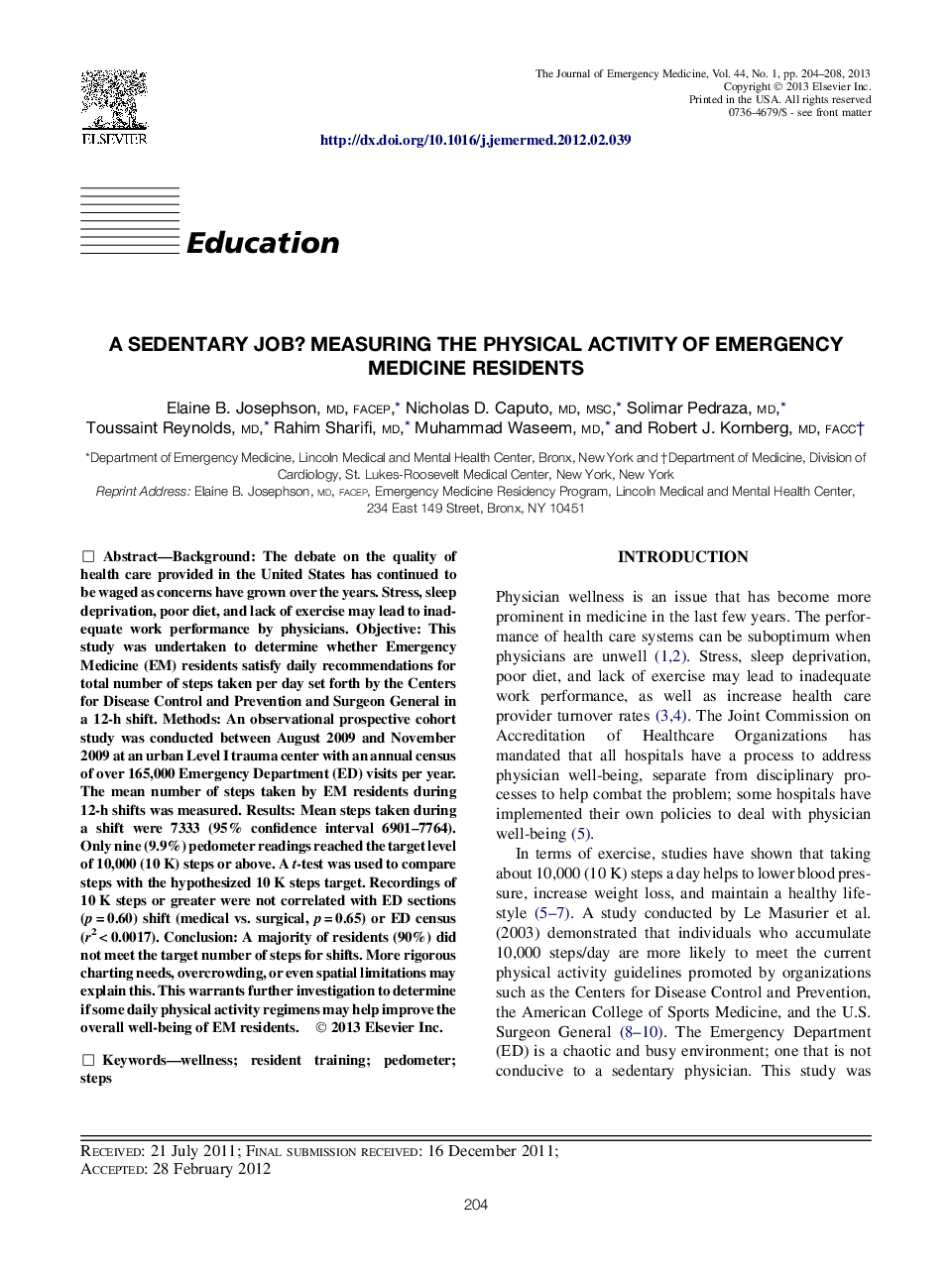| Article ID | Journal | Published Year | Pages | File Type |
|---|---|---|---|---|
| 3248713 | The Journal of Emergency Medicine | 2013 | 5 Pages |
BackgroundThe debate on the quality of health care provided in the United States has continued to be waged as concerns have grown over the years. Stress, sleep deprivation, poor diet, and lack of exercise may lead to inadequate work performance by physicians.ObjectiveThis study was undertaken to determine whether Emergency Medicine (EM) residents satisfy daily recommendations for total number of steps taken per day set forth by the Centers for Disease Control and Prevention and Surgeon General in a 12-h shift.MethodsAn observational prospective cohort study was conducted between August 2009 and November 2009 at an urban Level I trauma center with an annual census of over 165,000 Emergency Department (ED) visits per year. The mean number of steps taken by EM residents during 12-h shifts was measured.ResultsMean steps taken during a shift were 7333 (95% confidence interval 6901–7764). Only nine (9.9%) pedometer readings reached the target level of 10,000 (10 K) steps or above. A t-test was used to compare steps with the hypothesized 10 K steps target. Recordings of 10 K steps or greater were not correlated with ED sections (p = 0.60) shift (medical vs. surgical, p = 0.65) or ED census (r2 < 0.0017).ConclusionA majority of residents (90%) did not meet the target number of steps for shifts. More rigorous charting needs, overcrowding, or even spatial limitations may explain this. This warrants further investigation to determine if some daily physical activity regimens may help improve the overall well-being of EM residents.
